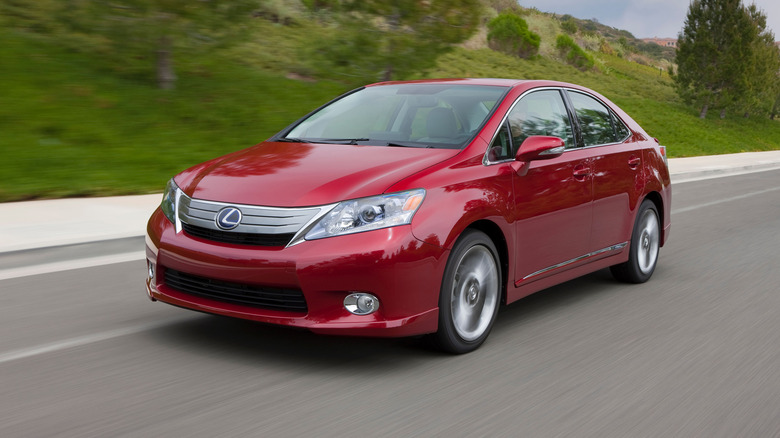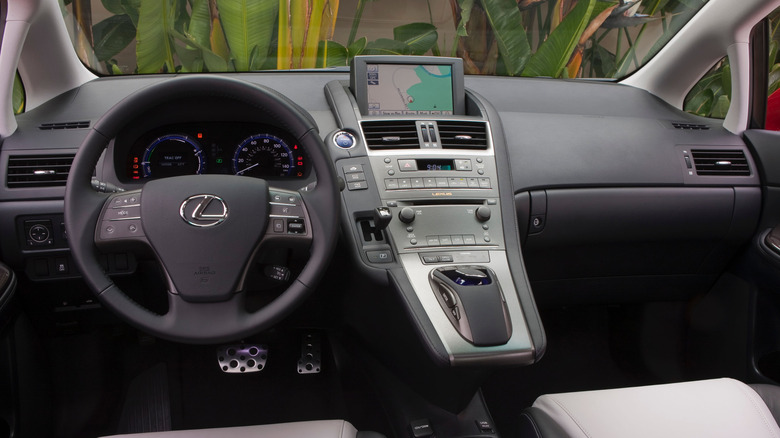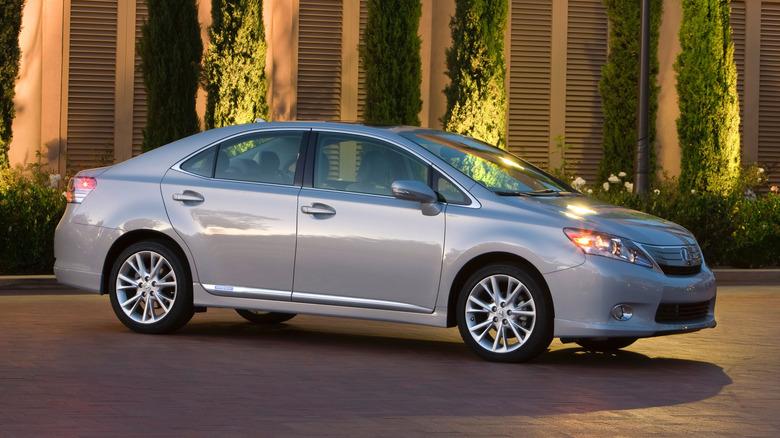Why Was The Lexus HS Discontinued?
Lexus, for the most part, is not a brand with a history of short-lived vehicles. Typically, Lexus models stick around for quite a while. Both the ES and LS sedans have been in the lineup since the brand's inception in 1989. Even the discontinued models, like the Lexus SC and Lexus GS, were around for multiple generations and many model years before being pulled from the lineup.
That's what makes the Lexus HS 250h hybrid of the early 2010s such an anomaly in Lexus history. Launched for the 2010 model year, the HS250h aimed to combine Lexus luxury with Prius fuel efficiency, but ended up earning mixed reviews at best.
HS 250h sales never reached expectations, and the car was unceremoniously killed off after 2012, having been around for just three model years. Today, it's a car that many people forget even existed. Let's dig in a little further to see what exactly the Lexus HS was, and why it failed to catch on with American buyers.
Just a fancy Prius?
In the late 2000s, Toyota was riding high on the success of the Prius, the pioneer for future technology. With its distinct shape, big MPG numbers, and green image, the Prius was a hot commodity. So Toyota thought it could take the Prius' super efficient DNA to create a Lexus-badged luxury car, aimed at both traditional Lexus buyers looking for a techy, fuel-efficient hybrid, as well as Prius buyers who wanted more luxury and refinement.
The result was the Lexus HS 250h. Though Lexus billed it as the "world's first hybrid-only luxury vehicle", the reality was less ambitious. The HS was a front-wheel-drive sedan based on the same platform that underpinned the Prius and other Toyota models. It used a similar hybrid system to the Prius, but with a larger 2.4-liter gasoline engine compared to the Prius' 1.8-liter unit.
The heavier HS 250h did have better acceleration than the Prius, but fell far behind the Toyota in fuel economy, with a 35 MPG combined rating to the 2010 Prius' 50 MPG combined rating. The HS 250h was not a cheap car either. With a starting MSRP of over $34,000 in 2010, or almost $50,000 today, the HS was $14,000 more expensive than the Prius.
Though it was better equipped than a Prius, it didn't offer a more engaging driving experience, or the supple refinement of Lexus' larger vehicles. Car and Driver found the HS to be a compromised vehicle that came up short as both a hybrid and a luxury car.
The hybrid Lexus lives on
The HS 250h wasn't the only attempt Lexus made at a fuel-sipping luxury car in the early 2010s. In 2011, the CT 200h debuted, and though it also lasted for just one generation, the CT's hatchback shape and cheaper price made it much more popular than the HS 250h. The discontinued CT hybrid was sold until 2017 before being replaced by the UX crossover as the entry-level hybrid in Lexus' lineup.
While the dedicated fuel-sipping HS is long gone from the Lexus lineup, the brand has now come full circle in a way, offering hybrid powertrains in the majority of the vehicles it sells. The 2025 Lexus ES hybrid, for example, is a larger, significantly more powerful sedan that, with a 44 MPG EPA combined rating, delivers fuel economy far superior to what the HS 250h did, at an even lower inflation-adjusted price.
Though it was a considered sales failure and is a rare sight on today's roads, the Lexus HS250h is a great marker of just how far automotive technology, and Toyota's hybrid systems in particular, have come in the last 15 years.


